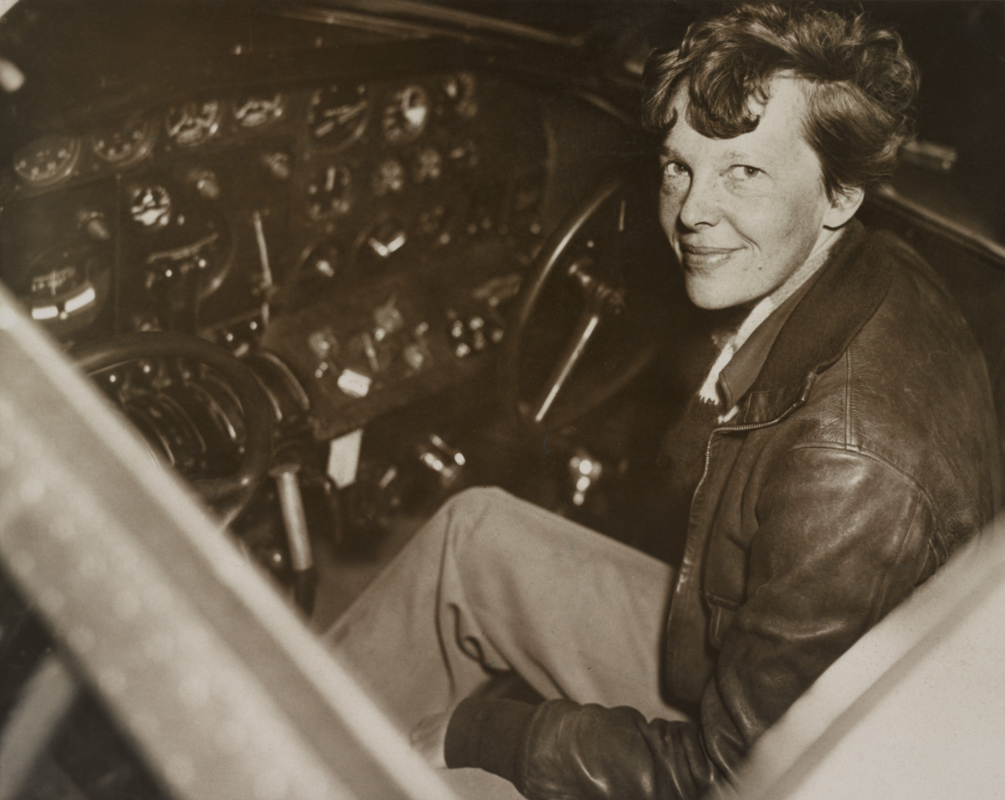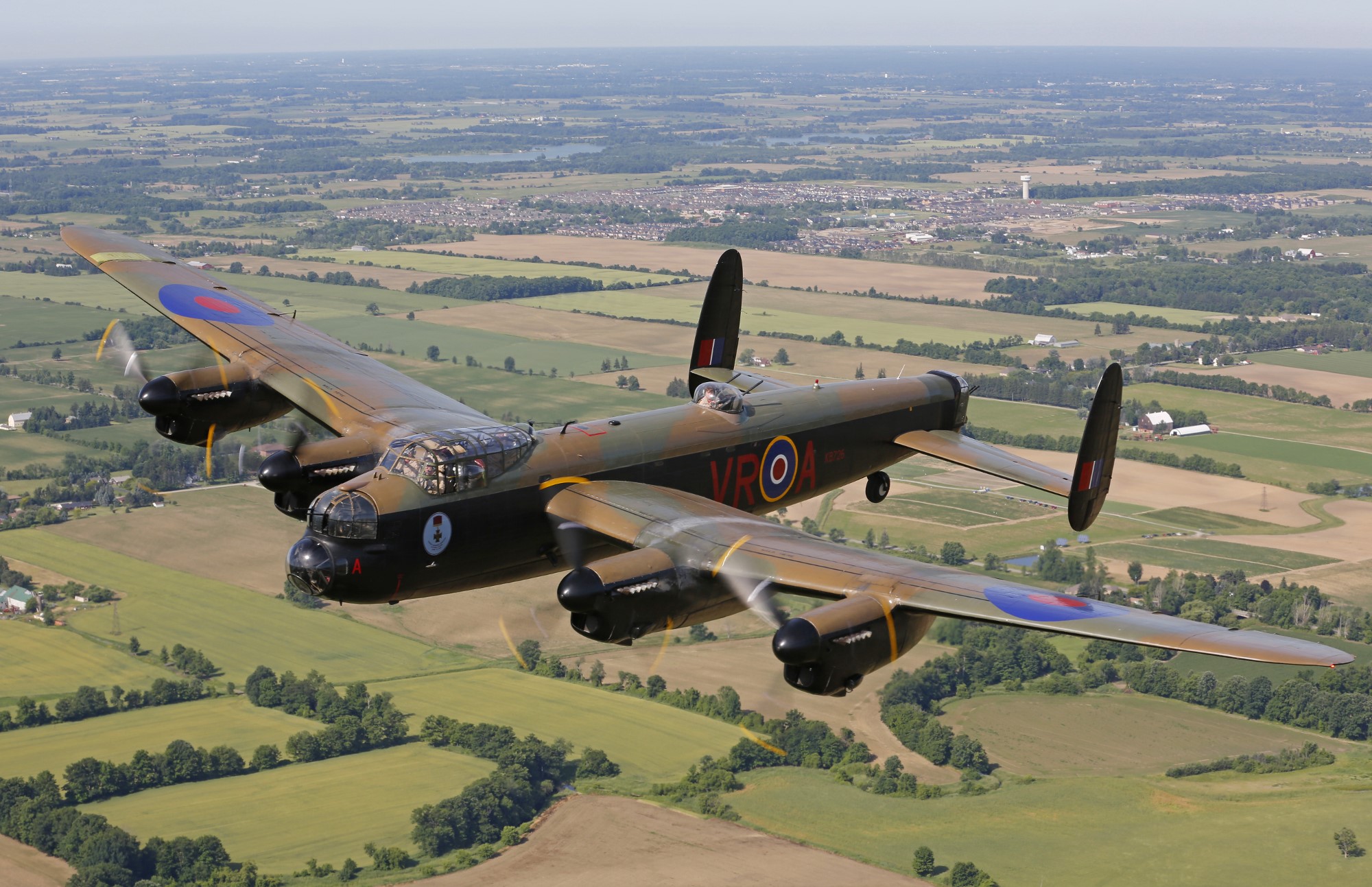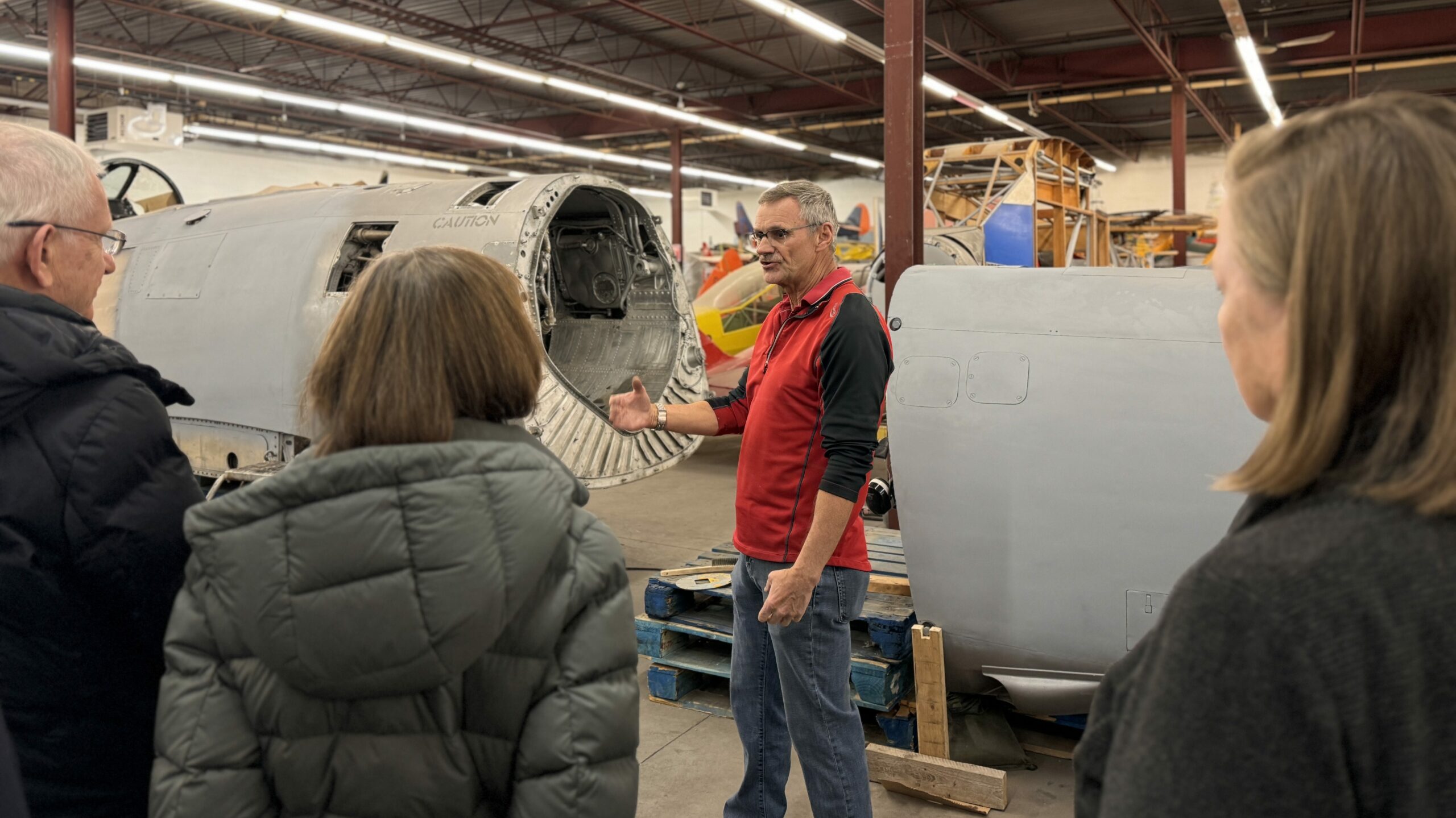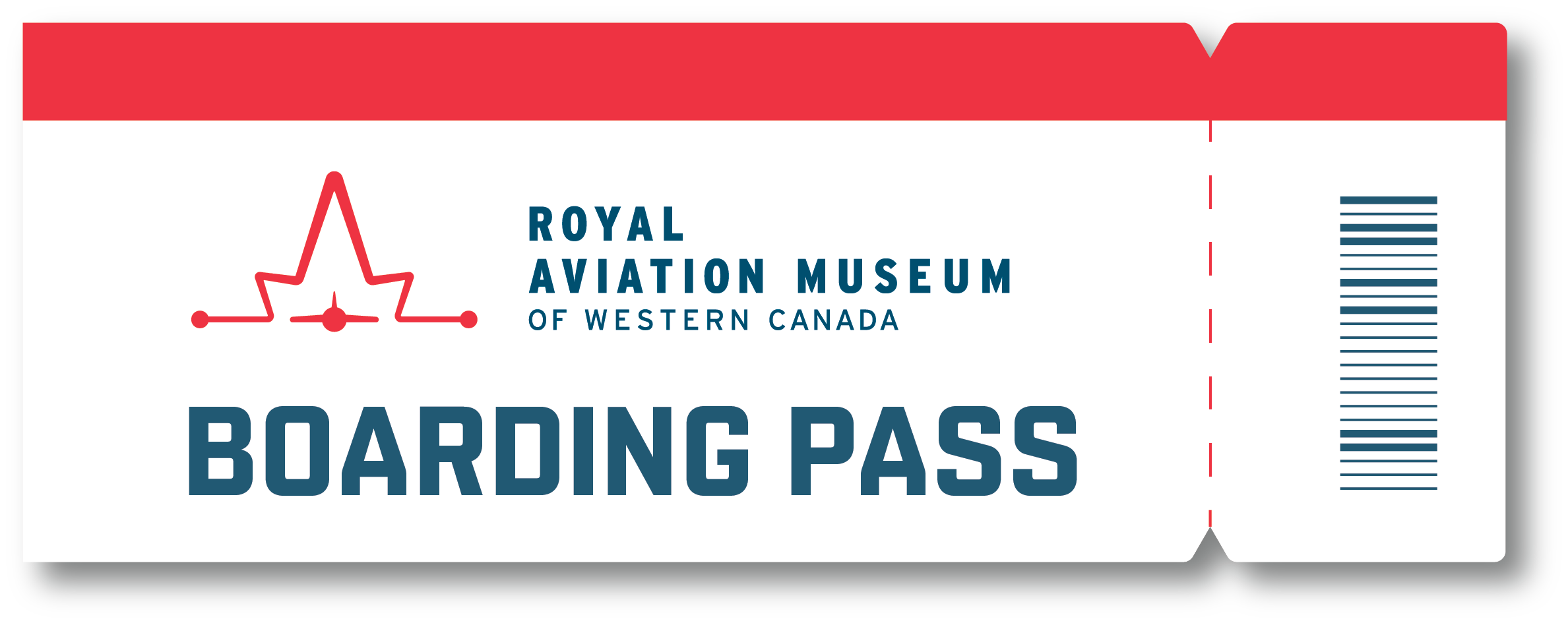October 4, 2022
It’s Women’s History Month in Canada!
Women have made great strides to achieve representation in the aviation and aerospace industries. It’s important to recognize these trailblazers and heroes for the inspiration they’ve sparked in others.
In a statement from the Prime Minister’s Office, Justin Trudeau acknowledges, “Throughout our history, women have played an invaluable role in shaping Canada. This October, we mark the 30th anniversary of Women’s History Month, an opportunity to celebrate the outstanding achievements of women in creating a more fair country, and to recognize the work that still needs to be done.
“This year’s theme – She did, so now I can – honours women trailblazers who raised their voices as agents of change in fields where they were under-represented, including the arts, education, and politics, and paved the way for future generations of women and girls to succeed.”
Featured throughout our museum are some of the women who’ve made an impact on advancing aviation and aerospace. Among them are Elsie MacGill, Lorna deBliquy, Rosella Bjornson, and Robyn Shlachetka.
Canada’s first female engineer
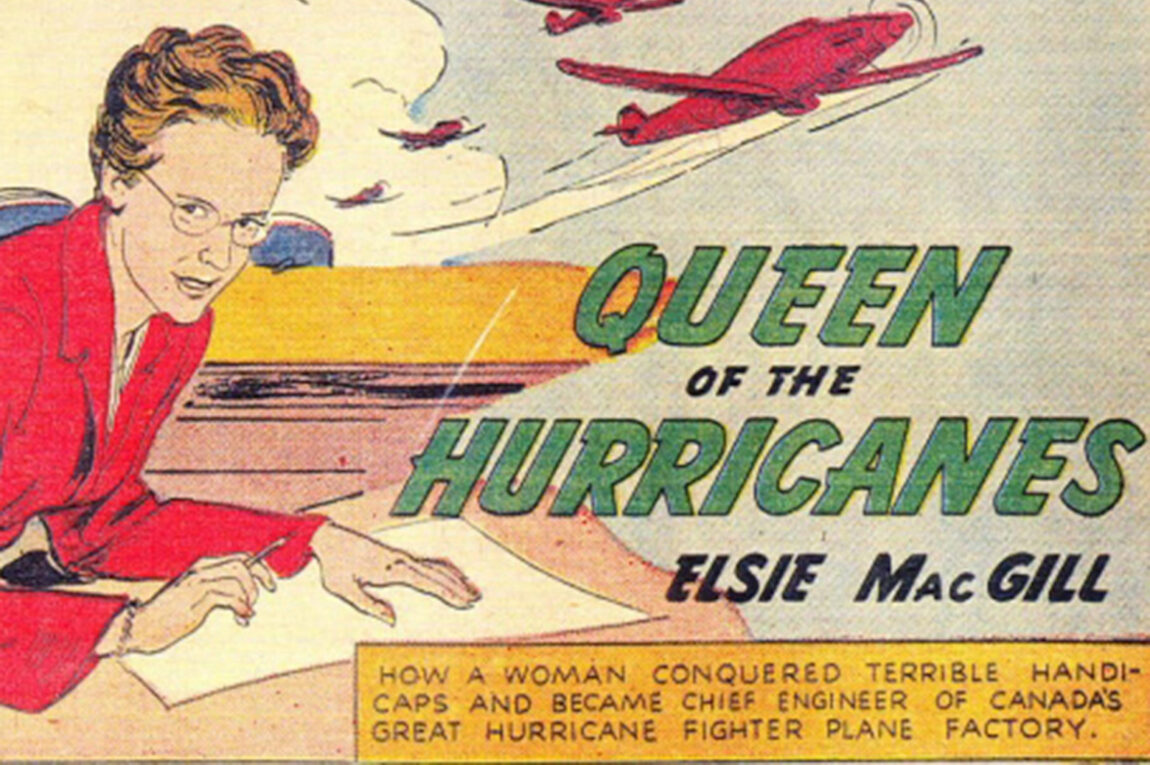
Born in 1905, Elizabeth “Elsie” MacGill was the first practicing female engineer in Canadian history. In 1984, she was inducted into the Canadian Aviation Hall of Fame (CAHF).
During the Second World War, MacGill oversaw Canadian production of 1,451 British Hawker Hurricane fighters, earning the nickname “Queen of the Hurricanes.” After the war, MacGill became a tireless advocate for women’s rights and for ending discrimination in engineering.
What makes her story even more inspiring is that while studying for her graduate degree in aeronautical engineering at the University of Michigan, she contracted polio. This did not deter her. She wrote her final exams from bed and went on to finish her post-graduate work at The Massachusetts Institute of Technology (MIT).
In the 1930s she worked for Fairchild Aircraft Ltd. and Canadian Car and Foundry, helping to design the Fairchild Super-71 bush plane and the CCF Maple Leaf II training aircraft.
Breaking down barriers
Among the first commercial female pilots in Canada, Lorna deBlicquy broke down barriers and served as a tireless advocate for women in aviation.
Born in Port Perry, Ontario, deBlicquy earned her pilot’s license at 16. In 1953, she applied to fly for Taylor Airways in Wabowden, Manitoba. Though initially rejected, when the pilot hired for the job saw the primitive working conditions and turned back, deBlicquy was reluctantly hired.
Lorna later returned to Ontario and accumulated over 6,000 flying hours as a commercial pilot and flight instructor. However, when she applied to fly for Air Transit in the 1970s, the airline rejected her for having insufficient experience. This prompted deBlicquy to campaign against discriminatory hiring practices in aviation.
deBlicquy’s accomplishments earned her multiple honours and awards, including the Trans-Canada (McKee) Trophy and the Order of Canada.
First female First Officer
In 1974, while flying for Winnipeg-based airline Transair, Rosella Bjornson became the first woman in North America to serve as First Officer on a jet airliner. She later became a Captain with Canadian Airlines and Air Canada, retiring in 2004 after 31 years as an airline pilot.
Another CAHF inductee, Bjornson is also credited with organizing the University of Calgary Flying Club. And, she paved the way for female pilots to fly while pregnant. During her second pregnancy in 1984, she underwent negotiations with Transport Canada. Subsequent to this, regulations were changed so that pregnant pilots were allowed to fly with doctor’s supervision.
In 2014, Bjornson received recognition for her all her contributions to aviation and was featured on a Canada Post stamp.
Manitoba medevacs
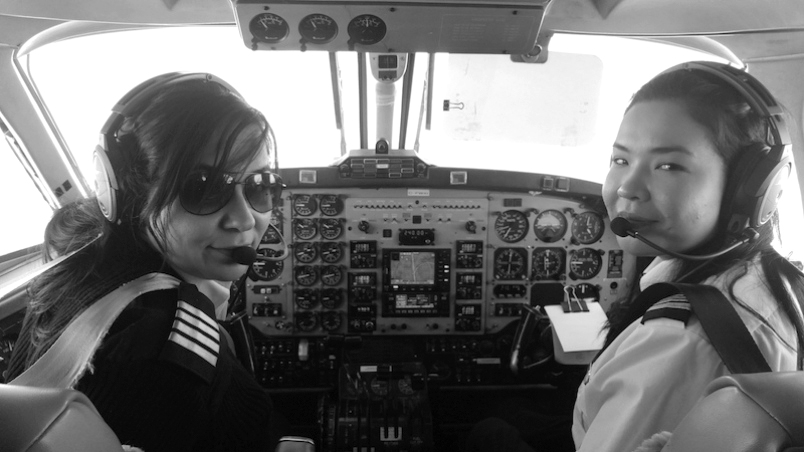
In 2018, Robyn Shlachetka and co-pilot Raven Beardy made headlines as the province’s first female Indigenous medevac flight crew.
Born in Wabowden, Manitoba, Shlachetka spent her childhood helping her father, a pilot for Cross Lake Air Service Ltd, refuel and maintain his aircraft. In 2005 she obtained her pilot’s license and worked for Skyward Aviation and Perimeter Aviation, facing many challenges including being grounded by a heart condition. Finally, in 2011 she was hired as a medevac pilot for Missinippi Airways, Manitoba’s first indigenous-owned airline.
As her father said to her, “If you can’t find a role model, just become one.” She certainly did that.
Canada’s first female astronaut
While not highlighted in our museum, we’d be remiss if we didn’t mention Dr. Roberta Bondar.
In 1992, Dr. Bondar made history as Canada’s first female astronaut, a childhood dream of hers. She was also the first neurologist to go into space.
Aboard NASA’s Space Shuttle Discovery, Roberta conducted more than forty scientific experiments, studying the body’s resiliency after exposure to space. This research was done in the span of just eight days. Today, she is globally recognized for her contributions to space medicine.
Digging deeper
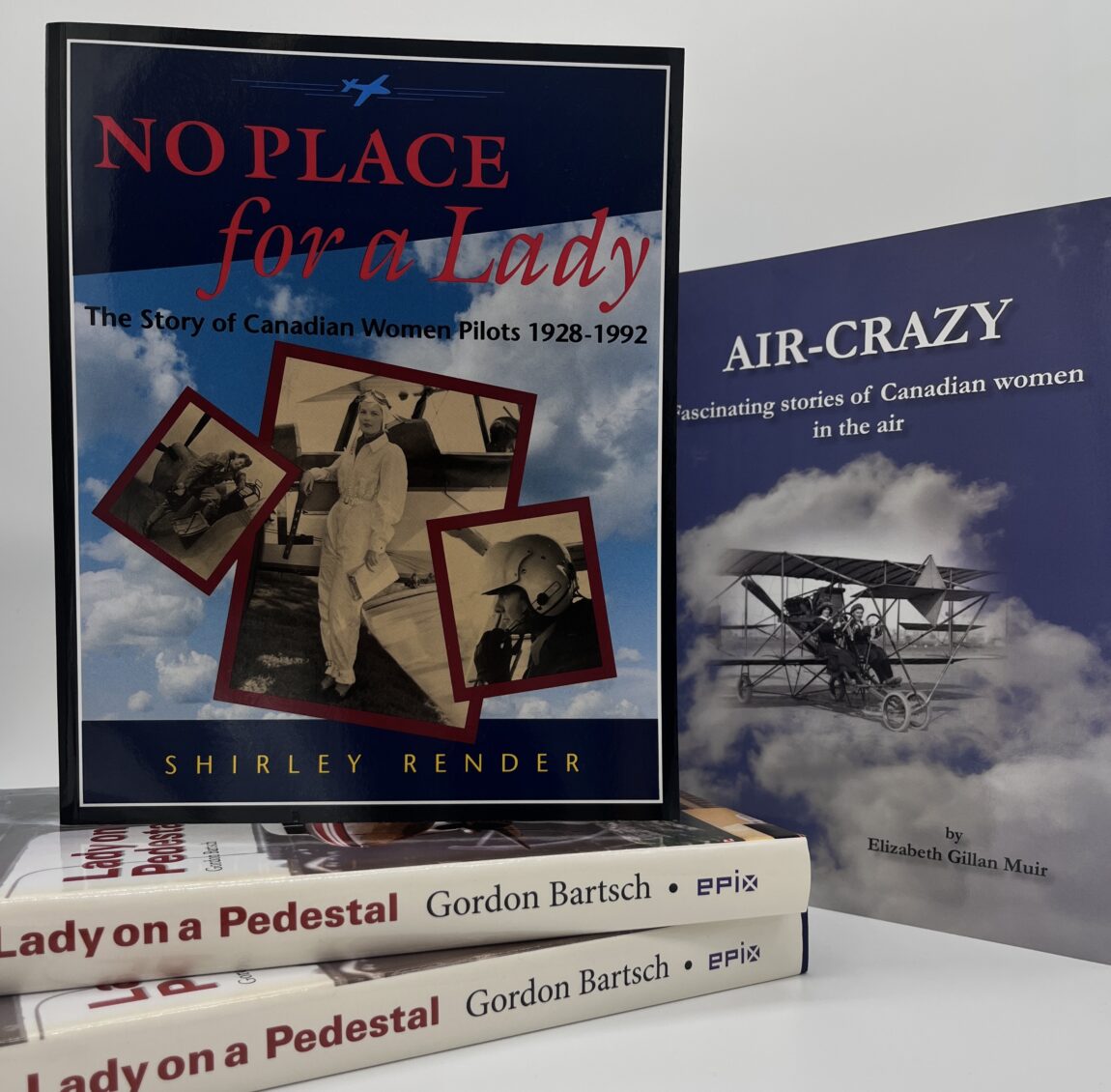
Learn more about these—and other—female aviation heroes throughout our museum. Or read up on others with some of the great books in our giftshop, the Landing Zone Boutique.
‘Lady on a Pedestal’ by Gordon Bartsch details the true story of Dawn Bartsch who earned the right to fly the Big Dipper in northern Canada during the Klondike gold rush route as captain.
‘Air-Crazy’ by Elizabeth Gillan Muir features many female Canadian aviators, including some of the ones outlined above. It tells stories of their courage and determination in seeking to advance Canadian aviation.
Authored by Shirley Render, ‘No Place for a Lady’ is “the first book ever written about Canada’s women pilots.”
Aviation communities and scholarships
Recently hosting ‘Girls in Aviation Day’ put on by Northern Spirit, a chapter of Women in Aviation International (WAI), showed us how much enthusiasm there is among young women for aviation and aerospace-related careers. Unfortunately, cost can be a barrier for many. Flight training and training for complementary professions does not come cheap.
Thankfully, there are a number of organizations that offer scholarships for these careers. This past year, WAI awarded nearly $500,000 in scholarships.
The Canadian 99s is another organization that offers scholarships for student pilots. And Air Canada funds the Captain Judy Cameron Scholarship which targets young women in pursuit of non-traditional aviation careers.
This Women’s History Month, we salute these women—and others—who have opened doors and created opportunities for those who come before them. Those who fought to be in the history books. Be brave, take chances, and lift others up.
As Amelia Earhart said, “The most difficult thing is the decision to act, the rest is merely tenacity.”
